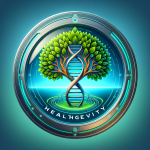-
HealthGevity Admin posted in the group Longevity
‘A vaccine for aging in under ten years’
Agemica founder Ronjon Nag on the moonshot company he believes will develop a vaccine for aging and make a dramatic difference to lifespan and healthspan.
Agemica is on a mission to create a vaccine for aging; its platform uses an AI-driven approach to seek out antiaging therapies that address root causes of aging and leverage those to prevent diseases of aging such as neurodegeneration, cardiovascular disease, immune system failure and cancer.The company hopes its omics-based tech will extend both lifespan and healthspan, and the platform has already been validated in 17 cancer areas and predicted antiaging candidates that have higher efficacy, reduced side effects and lower chances of developing drug resistance.
Longevity.Technology: Agemica’s aim is to extend the number of indications of its candidates and pave the way, not only to better patient outcomes, but to therapies that hit the market much faster. We sat down with CEO and Cofounder Dr Ronjon Nag to find out how the platform works, its revolutionary potential and the diseases of aging Agemica has in its sights.
Ronjon Nag on…
Big ideas generate big questions
Longevity today is full of really big ideas – 100 is the new 80, with lots of people making 100 and it would be great to get lots of people to 112, 117. Diet and exercise may get us to 100, therapeutics to 120, but to get to something like 150, we’re going to have to do something fundamentally different – and that’s really what I am trying to work on.Agemica is in drug discovery, but we are doing something very different – trying to develop a vaccine for aging. And there are lots of questions to answer – what does a vaccine for aging mean? Does it just stop aging or does it actually reverse aging? Do you take it once or daily or annually? Our platform is trying to find combinations of existing drugs that will answer these questions, and not only do we want to get a vaccine, we also want to develop it quicker than anyone else and cheaper than anyone else.
Playing the odds
COVID prompted a number of machine learning activities, but I think there’s still a race for actual drug to be invented by a computer. There’s a race to get to the fully-approved, phase three drug. We want to create a vaccine that is fully approved in less than 10 years, but how to do it? We can’t do a new chemical entity because that’ll add 10 years minimum to the development profile, so we have to speed up the probability of success, increase the probability of success. Right now it’s a 1 in 20 chance of the preclinical stage getting successfully to the end. With machine learning, we believe we can increase that substantially. If you have a genetic profile, it’s a 40% improvement. If you’re using biomarkers, it’s a 3X improvement.So, machine learning will give us a higher probability of getting there, but then we also need to do the trials, and trials take a long time. How do you condense the trials to a short time? Doing that means you have to use existing drugs but in drugs in different combinations? So, we don’t have to invent new drugs – 2500 them are fully approved, another few thousand have got through the safety phase, so using that as a database and using other equivalents of the FDA around the world, we have ten or fifteen thousand drugs to choose from that are safe, and now one can accelerate the trial process.
Investing in the future
There are lots of drug discovery platforms, and classic machine learning could produce a list of candidates, but how do we know they work? So, we tested our platform on existing diseases trying to find what drugs would work for existing diseases blinded, so we wouldn’t know what works ahead of time. We tried them all at the same time, spitting out the ones that would work. And we rediscovered standards of care for cancers; the next step is trying things on cell lines, on animals, but the trial phase, even in a condensed phase is still expensive, so we want to increase the probability and speed it up.We’ve identified some candidates of combinations, and we’ve just finished a whole load of cell line tests and now we want to go to the next stage of creating an IND package. We can’t make the IND filing about aging, of course – it’s not pragmatic to do aging, as it is not considered a disease by the FDA. Instead we look at age-correlated diseases; our first set is cancer, then the other two categories we want to look at is cardiovascular and neurodegenerative. The trick is is finding a universal signature across all of these diseases. It might be argued one is creating mini vaccines with each of these categories – a vaccine for cancer, a vaccine for heart attacks or a vaccine for Alzheimer’s – but in the end, we want to create a vaccine for aging and we think we can do that in under 10 years.
I’ve put my money where my mouth is and invested myself – this is a moonshot company which will make a dramatic difference to people’s lives.
User Badges
Gamipress User Balance
1440
Points
0
XPs







